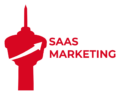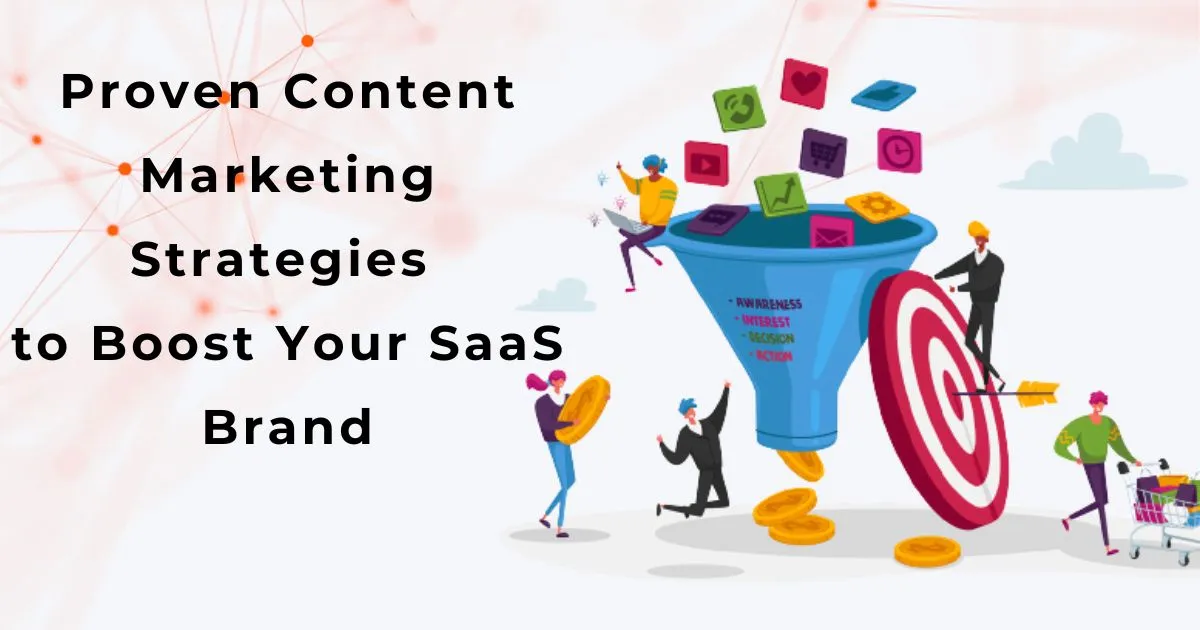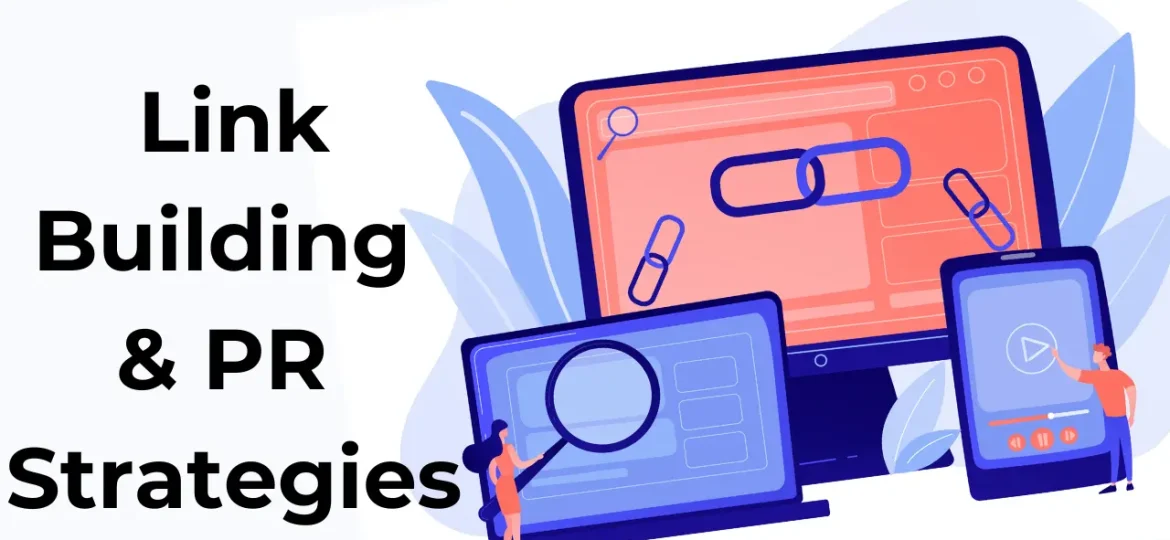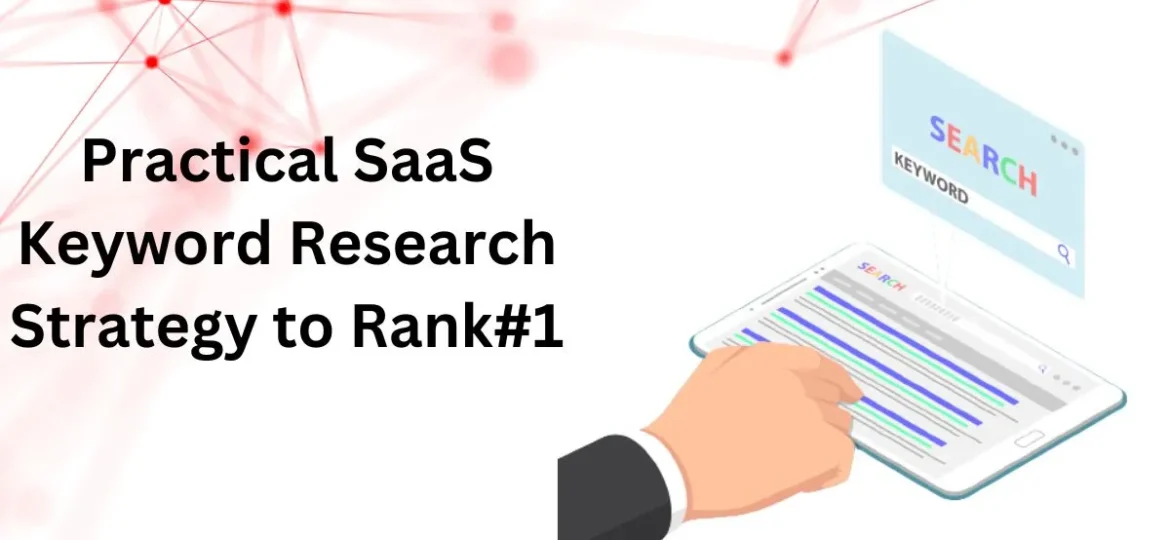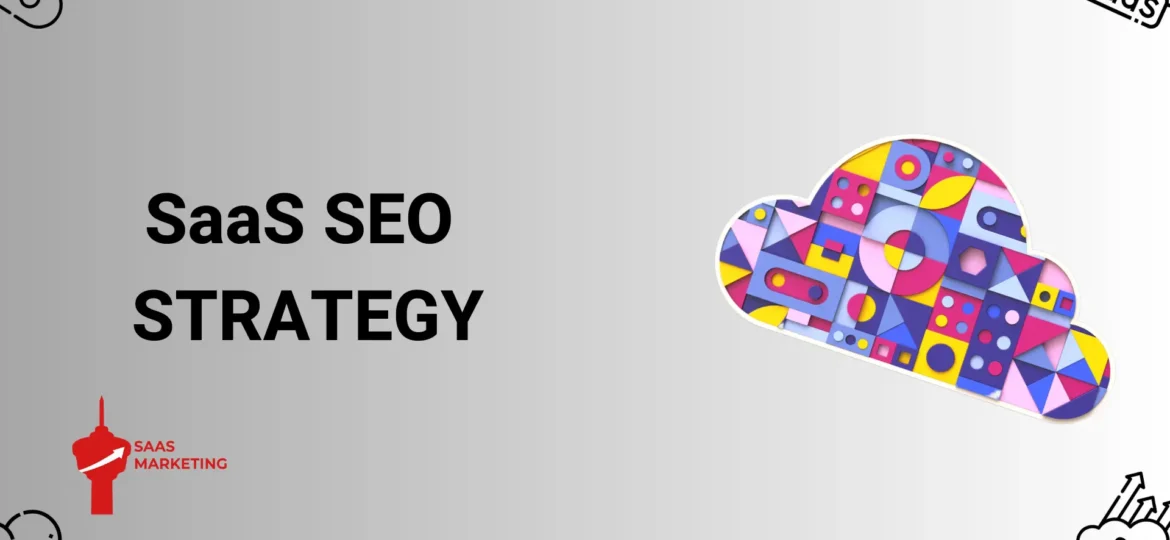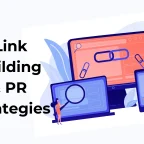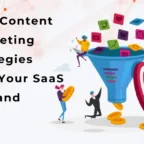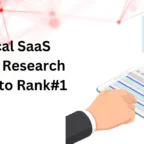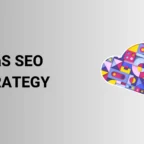Introduction
The over-packed and crowded SaaS market needs more than just a product, and that is quality content. Your product can deliver what a user wants, but the content will help it reach the targeted audience first. As per a survey, more than 70% of B2B and B2C businesses use the content marketing strategy to boost their sales and attract new customers. Apart from just enhancing sales, content-led communication plays a significant role in connecting with the users and delivering what they need. Statista conducted research in Feb 2022, according to which 23% of business owners believed that content-led communication is the most effective method of personalized targeting (of customers).
The ability to communicate, solve problems, and deliver quality SaaS products to your customers is all you need, and guess what— it’s incomplete without formulating optimized SaaS Content Marketing Strategies.
What is SaaS Content Marketing?
Now that you’re entirely influenced by what a content marketing strategy can do for your SaaS business growth, it’s time to find out why you need it the most and what difference it holds compared to ordinary marketing strategies. Let’s start by defining the SaaS content marketing strategy first:
“Crafting, organizing, and distributing quality content not just to attract but convert the potential customers into actual buyers organically is what we call content marketing.”
The SaaS content marketing strategies involve tricks and tactics to optimize the type of content that’ll work for your business.
Now, the question arises: What type of content do you need to market your SaaS products? To understand this, let’s dig deep into a recent report by DemandGen on content preferences. First, the report sheds light on the number of types of content and states that the buyers look at 5-7 different types of content before making a purchase decision. Additionally, among all the types of content, research surveys or reports hold the top position. At the same time, case studies were found to be 40% more helpful in influencing customers to purchase. The rest of the content, such as webinars, white papers, e-books, and blogs, also hold a major chunk in the percentage.
Why Do You Need a SaaS Content Marketing Strategy? | Triple AAA Concept
Now, let’s move on to why a B2B or B2C SaaS business needs content marketing strategies and how different it is from the rest of marketing techniques. SaaS marketing strategies can solidify your brand’s perspective in the eyes of consumers and become a great source of information for potential buyers. The SaaS content marketing strategies can benefit your business in three ways, which we call the Triple AAA concept, i.e., Awareness, Authority, and Audience Loyalty.
- Awareness— The SaaS content marketing strategies will help you create awareness and solidify your brand’s image.
- Authority— The brand’s authority measures an audience’s trust level for a particular brand. Moreover, the authority can be limited to the audience and the reputation earned by other brands in the same niche.
- Audience Loyalty— The audience’s loyalty can be greatly improved by having an optimized SaaS content strategy, as it helps communicate your product’s vital information to the audience.
The marketing techniques can differ based on the nature/type of brands; however, for a SaaS business, content is the pure form of marketing. The reason is consumers’ curiosity in only purchasing a SaaS product but to continuously educate themselves on the latest trends in the industry. Therefore, producing content around your SaaS product and on the latest trends in the same niche can help you build a loyal community.

Case Study | Kinsta
Let's take the example of a famous SaaS business, Kinsta. Kinsta, a WordPress hosting provider, has received an upsurge in visitors when they start posting educational and informational content, and this has proved to be their best marketing strategy so far.
As per the statistics, Kinsta has received an upsurge in organic views, which goes to 672,000 visitors as of June 2022.
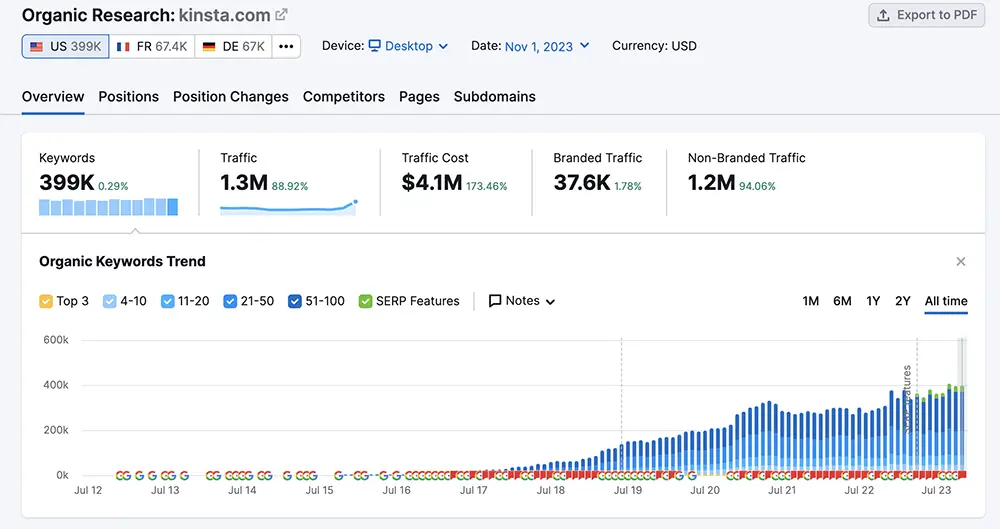
How Different is Content Marketing for SaaS Businesses?
Content marketing strategies can be owned by different businesses, such as fashion brands, tech product brands, and more, and the technique that will optimize their growth differs for each one. SaaS content marketing, however, is a bit complex and is distinguished from others in several different ways:
- SaaS is all about reviews; the conversion rate dramatically depends on the existing customer’s perspective or review of your product.
- Selling SaaS products is not a one-time thing but a repeated business, so you must focus on consistency.
- Content marketing should involve both salesy articles and educational and informational content.
- As a SaaS business, you’re selling both the technology and services; thus, the optimized content marketing strategy will differ from the rest of the businesses.
Our Guide to Building a Powerful SaaS Content Marketing Strategy
You cannot win until you find it, and that’s what we’ll do in this section. Our team of experts has explored a winning strategy for your SaaS search engine optimization (SEO) content marketing. The optimized way to market your SaaS product through content starts from building a foundation, moving through the research process, and analyzing the performance tracking parameters.
Here’s our guide to developing an impactful SaaS content marketing strategy for your business:
1. Building Foundation for Content:
Simply posting content won’t let you anywhere, and most modern brands are not ready to accept this fact! Most of them expect results right after the content is posted without laying any firm foundation. The first step towards building an optimized SaaS SEO strategy is to build a foundation for your content. Before rushing towards posting content, keep the brand story upright and get together all the marketing assets you need.
· Keeping Brand Story Upright:
But what does getting the brand story upright mean here? Let’s find out! SaaS products can be complex to market as they involve technology and a deep comprehension of a value proposition. Vivek Shankar, a B2B Fintech Content Writer and Expert, has called out SaaS businesses that start simply with SEO. He said,
“SaaS companies starting with SEO and then focusing on the rest are doing it all backward. Your product sales and conversion rate come first, keeping your brand story upright.”
Thus, ensure your brand does not lack when it comes to documenting the unique selling proposition (USP), overall positioning strategy, brand story (motivation), and segmentation strategy.
· Pre-requisites to Content Production
Before you move toward creating quality blogs for your SaaS website, make sure to have all the marketing assets you need. For example, investing in crafting hundreds of blogs before you have an optimized website for your SaaS brand is useless. Thus, to avoid wastage of your meaningful resources, here’s what assets you need to get ready before you start posting content:
· An Optimized Website Structure
That’s right, not just the content but the website structure needs to be optimized, such as attractive UI, higher page speed, sorted interlinking, high-resolution theme images, modern theme structure, and more.
· Content Production or Marketing Team:
Only trained professionals know how to craft and structure the content that will rank higher on search engines. Thus, hire a professional content agency to craft an actionable SaaS SEO strategy for your business and optimize your content production to better suit the market needs and customer preferences. Whether you need direct response copywriting service to increase your return on investment (ROI) or engaging and long-form blog content or case studies to increase search engine rankings, a highly specialized and committed team can boost your traffic and MRR.
2. Researching and Defining Target Audience
Audience makes or breaks the businesses, which you must take care of at the second step of the SaaS SEO content marketing strategy. Content should be worthy enough to attract the audience and enhance brand sales, but there are a few questions you need to answer before you start making content for this purpose. What type of audience do you want to influence? What type of customers your SaaS brand will have? Answering these questions will only be possible if you research, understand, and define your target audience. You can follow a few strategies to research the target audience and determine what works for you to optimize the SaaS SEO content marketing techniques.
Strategy 01: Social Media Analytics
This strategy will work if you have a social media account relevant to your SaaS brand or product. The first step is to leverage your social media followers and then check the analytics. Social media platforms like Facebook allow businesses to discover their customers’ characteristics. Once you’ve identified your customer’s characteristics, you can call it your ideal buyer profile, and you must target this perfect buyer’s needs. This will let you understand your target audience for marketing and sales.
Strategy 02: Understand the Funnel
Understanding the audience funnel can be an effective strategy for your SaaS business. However, to understand the target audience and craft the content better, here’s the funnel concept explained below. The three main sections of the funnel define each target group of your audience. Starting from the bottom, we have the audience at the decision stage only, and then comes the consideration and awareness stage at the last.
- Decisive Stage (Bottom of Funnel)
Starting from the bottom of the funnel (BOF), we have the decisive stage first. Here, customers are on the verge of accepting or rejecting your product. Some of the customers were already comparing your product with the competitors as well, and others were having an in-depth analysis to find the worth.
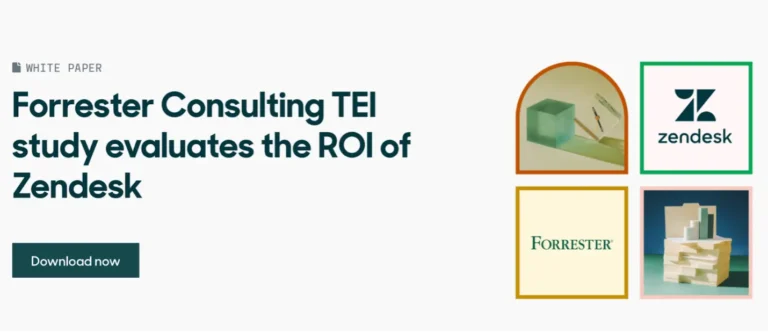
BOF | Example
Here's how Zendesk used to share some extra information that the audience might want to know right on the homepage to indulge them in making a purchase decision as soon as possible.
- Consideration Stage (Middle of Funnel)
Then comes the middle part of the funnel, comprising an audience who might know your brand but are still confused about purchasing. Here, the customers are considering your product or services, and here’s where you can play a role with the content. Your informational blog posts, demo videos, or product guides can convert potential customers into buyers.
- Awareness Stage (Top of Funnel)
This is where the customers are still learning about your new brand or product (especially for the first time) and are not influenced enough to make a purchase. Blogposts about solving a particular problem with your SaaS product or useful and engaging information can play a role here.
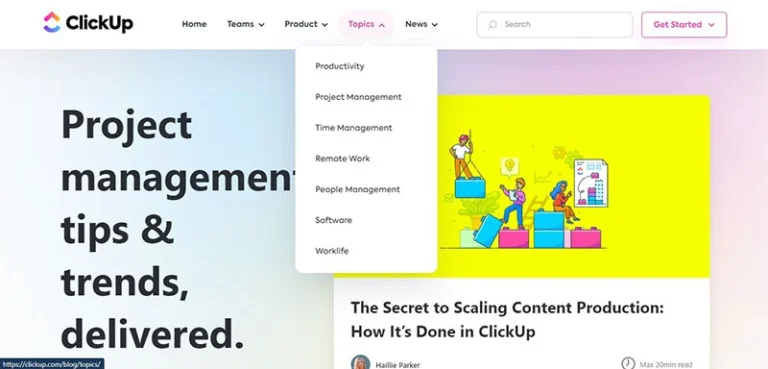
TOF | Example
Let's take an example of ClickUp, a famous project management tool company targeting several different problems and types of audiences. ClickUp has managed its blog section so that you can find relevant informational content based on work challenges such as project management, product management, time management, and marketing.
3. Leveraging Keyword Research | Developing Conversion Strategy
The next step in SaaS SEO content marketing is to find the relevant keywords that can rank on the different search engines. Not just finding high volume and low difficulty keywords but finding ones that resonate with your target audience’s interest, called buying intent keywords. Moreover, experts find it better to cover fewer core topics and hold the utmost importance in your product niche than cover the shallow information on hundreds of keywords.
We again have the keyword mapping and funnel concept for you regarding the keywords. This concept comprises four main types or keyword categories that’ll work for your SaaS brand or product. These include the informational, navigational, commercial, and transactional keywords. Let’s find out what each of them means:
Informational Keywords:
These keywords can give users a detailed answer to their queries and, hence, can be defined as informational keywords.
For example, these can be the keywords focused on the frequently asked questions about any topic or based on the common pain points of the users.
Navigational Keywords:
Next, we have the navigational keyword category, which includes the keywords related to the brand query or if the customer wants to find a specific product or brand.
For example, these keywords can include the brand or product name.
Commercial Keywords:
Commercial keywords, as clear from the name, include the phrase that customers use before making a purchase decision. It can give all types of information related to pricing, offers, alternatives, and more.
For example, keywords related to the best category or alternatives can be helpful.
Transactional Keywords:
These keywords show the intent of users ready to purchase and convert into customers.
For example, this category includes pricing, discounts, coupons, and more keywords.
However, if you want to learn more about the vital research strategies for SaaS businesses, you can visit our detailed guide.
4. Produce Quality Content | Production Procedures
Once you’re done finding the relevant and buying intent keywords, it’s time to produce quality content. The secret to quality content is nothing but value. Many business owners are keen to produce content on the relevant keywords but are not eager to offer value. As Kevin Indig, a Growth Advisor, said:
Most companies over-index on SEO content marketing and emphasize the search volume. It's good, but they don't spend much time providing value to the articles/blog posts that solve the customer's problems.
Pre-Requisites to Content Production:
Now that you know the drill, bind the relevant keywords with quality content that adds value to your SaaS website. Before you start making quality content pieces, make sure you have answers to all the following questions below:
- Find out what type of content is clicked the most in your niche and revolve around those on your website, such as how-to guides, informational articles, or more.
- Analyze your competitors and what type of content brings them more traffic.
- Find out what type of keywords your competitors are utilizing in their content.
- What type of content can bring you newsletters and signups?
Once you have the answers to all the above questions, it’s time to produce some quality pieces. Here’s a step-by-step guide to creating content for your SaaS website:
- Conduct Research— Conduct full-fledged research before making the content or hiring someone to write. Even if you’re hiring someone, researching your niche will help you get a better outcome.
- Content Calendar – Yes! A content calendar is a thing. You can plan and prioritize your content production and posting process per the audience’s response. Make sure to blend different kinds of posts on a weekly or monthly basis, such as blog posts, long-form blogs, informational posts, and more.
- Hire a Content Production Team – You can hire a professional to do the job! From researching keywords to creating relevant content, SEO content agencies can do everything for you. Look for authors who understand your SaaS product and are ready to help you produce some masterpieces. We suggest contacting SaaSMarketing.ca and getting high-impact, result-driven content for your brand.
Conclusion
Launching a SaaS brand and marketing it to different audiences is a dynamic process that keeps changing occasionally. Every year, you might need to alter the strategies or techniques to generate traffic and convert it into sales. Still, the core concept remains the same, i.e., posting quality content for marketing purposes. However, make sure to remember the fun fact that content game is not the same for all. Thus, experiment and find what content marketing strategy works for your SaaS business.
